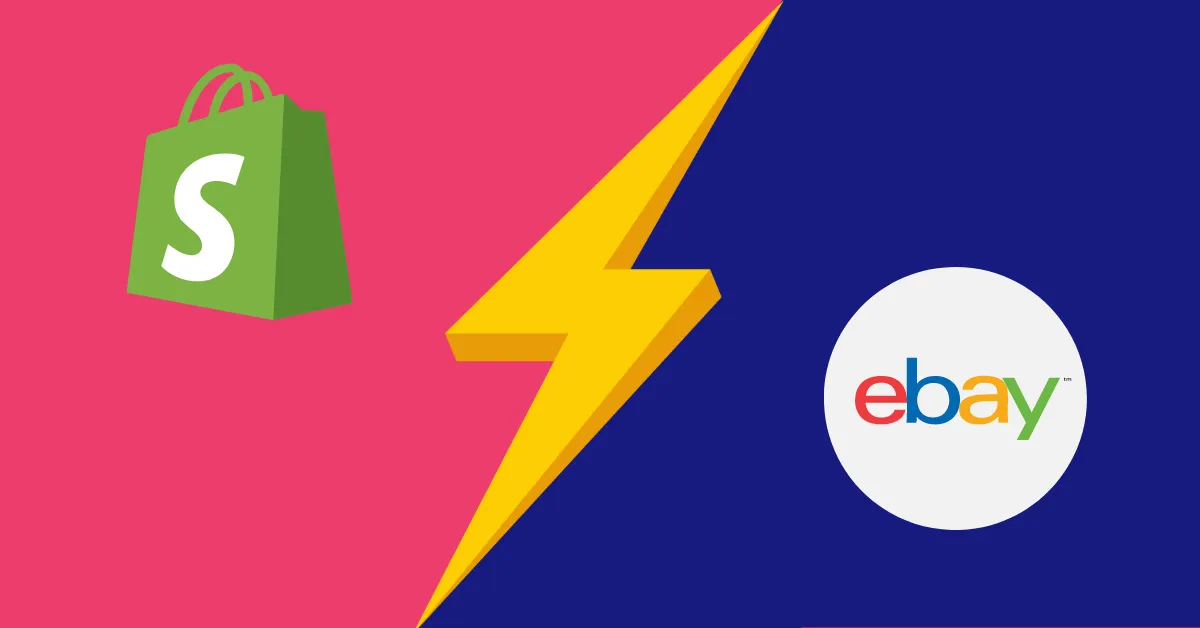**Introduction: The Dilemma of eBay vs. Shopify Dropshipping**
Dropshipping is a popular and accessible way to start an e-commerce business without the need for upfront inventory investments. Two platforms that frequently come into consideration for dropshipping ventures are eBay and Shopify. In this article, we’ll compare the pros and cons of dropshipping on eBay and Shopify to help you make an informed decision that aligns with your business goals.
**Dropshipping on eBay:**
*Pros:*
1. **Built-in Audience:** eBay boasts a massive user base, providing immediate exposure to millions of potential customers.
2. **Ease of Use:** Setting up a dropshipping store on eBay is relatively straightforward, making it suitable for beginners.
3. **Low Costs:** eBay charges listing and final value fees, but there are no monthly subscription fees.
4. **Trust and Credibility:** eBay’s long-established reputation can boost buyer trust, which may lead to higher conversion rates.
*Cons:*
1. **Intense Competition:** The eBay marketplace is highly competitive, making it challenging to stand out.
2. **Limited Brand Control:** You have limited control over branding and customization, which can affect your brand’s identity.
3. **Fee Structure:** While there are no monthly fees, eBay charges transaction fees, which can add up.
**Dropshipping on Shopify:**
*Pros:*
1. **Full Control:** Shopify offers complete control over your brand, website design, and customization.
2. **Diverse Sales Channels:** Shopify allows you to sell on multiple platforms, including your own website, social media, and marketplaces.
3. **Scalability:** Shopify is scalable, allowing your business to grow without major technical hurdles.
4. **Comprehensive Tools:** Shopify provides a range of e-commerce tools, including SEO optimization, analytics, and marketing integrations.
*Cons:*
1. **Monthly Costs:** Shopify requires a monthly subscription fee, which can increase your initial overhead.
2. **Marketing Effort:** You are responsible for driving traffic to your Shopify store, which may require a significant marketing effort.
3. **Learning Curve:** Shopify’s robust features can be overwhelming for beginners, requiring a learning curve.
**Choosing the Right Platform:**
1. **Consider Your Business Goals:** Evaluate your long-term goals and the level of control you desire over your brand. If you want complete control and scalability, Shopify may be more suitable.
2. **Budget:** Assess your budget and cash flow. eBay may have lower upfront costs due to its fee structure, while Shopify requires a monthly subscription.
3. **Target Audience:** Consider your target audience and their preferences. eBay may be advantageous if you’re looking to tap into eBay’s existing user base.
4. **Brand Identity:** If brand identity and customization are crucial, Shopify’s flexibility gives you more control over your store’s appearance and customer experience.
5. **Marketing Strategy:** Think about your marketing strategy. Shopify requires more effort in driving traffic, whereas eBay provides exposure to an existing marketplace.
**Conclusion: Tailoring Your Dropshipping Journey**
The choice between eBay and Shopify ultimately depends on your specific business objectives, budget, and preferences. eBay offers immediate access to a vast audience and is beginner-friendly, while Shopify provides greater control, scalability, and customization options. Whichever platform you choose, success in dropshipping hinges on your product selection, marketing strategy, and dedication to delivering excellent customer service. Carefully evaluate your options and tailor your dropshipping journey to align with your unique business vision and goals.

